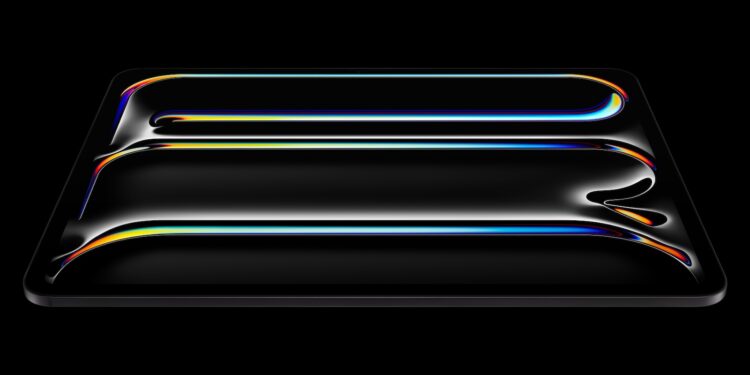Apple is expected to launch new iPad Pro models in October 2025. The new M5 chip and OLED displays, which have already entered mass production, will be at the center of this. This continues Apple's strategy of regularly delivering targeted upgrades to the iPad Pro line. While there aren't expected to be any major design changes this year, technical improvements are definitely planned.
The iPad Pro remains Apple's most powerful tablet—and for many, a laptop replacement. Last year, the models were equipped with OLED displays for the first time, along with a thinner and lighter chassis and support for the new Apple Pencil Pro. This year, Apple is focusing less on a complete update and instead offering a more manageable technical upgrade, primarily focusing on the new M5 chip. OLED production has already begun. This means Apple appears to be on schedule to bring the new devices to market in time for fall.
Mass production of OLED panels has started
According to a report , Samsung Display and LG Display have already begun series production of the OLED panels for the new iPad Pro. Unlike last year, when Samsung exclusively supplied the 11-inch panels and LG the 13-inch versions, this year both manufacturers are sharing production of both sizes. Apple apparently wants to broaden its supply chain and become less dependent on individual suppliers. OLED technology will therefore remain a central component of the iPad Pro models in 2025. Apple seems satisfied with this – and, according to reports, even plans to use OLED in other iPads in the future: in the iPad mini from 2026 and the iPad Air from 2027.
New M5 chip comes with 3-nanometer technology
The biggest new feature of the upcoming iPad Pro generation will be the M5 chip. Like its predecessor, the chip is based on TSMC's 3-nanometer process technology, but according to current information, it offers further advances in performance and efficiency. This means you can expect faster computing processes, better graphics performance, and likely longer battery life. There are no concrete benchmark data yet, but it's safe to assume that the M5 chip will bring noticeable advantages similar to the jump from the M3 to the M4 – especially for users who regularly work with graphics-intensive apps or multitask.
Design remains largely unchanged – with one small change
According to current information, the case design will remain largely unchanged. The slim, lightweight design of the M4 models will be retained, as will support for the Apple Pencil Pro. There could be a small but interesting change to the Apple logo: It will be oriented in landscape mode in the future, ensuring it's positioned correctly when used with a keyboard or in landscape mode. A design decision that likely reflects the increasing usage behavior of iPad Pro users.
Release planned for October
Bloomberg reporter Mark Gurman expects Apple to unveil the new iPad Pro models in October 2025. The previous M4 models launched in May 2024, meaning Apple is once again adopting a one-and-a-half-year product cycle. The fact that OLED production is already underway suggests Apple can meet this schedule.
M5 iPad Pro: Evolution instead of revolution
The 2025 iPad Pro won't be a completely new device, but rather a targeted hardware update. The most important innovations are the more powerful M5 chip and the optimization of OLED production through the use of two suppliers. In terms of design, much remains the same, with the exception of the redesigned Apple logo. If you own a current M4 model, you don't necessarily need to upgrade. However, if you're still using an older device or are waiting for the next big performance upgrade, the new iPad Pro is probably worth it—especially for professional applications. (Image: Apple)
- iPad Pro: Apple is working on narrower display bezels
- iPadOS 26: These features turn your iPad almost into a Mac
- iPadOS 26: Stage Manager now on significantly more iPads
- Apple Music gets a DJ feeling with AutoMix feature
- iOS 26 & Co.: These Apple devices will receive updates
- iPadOS 26: Apple explains the late proximity to the Mac





